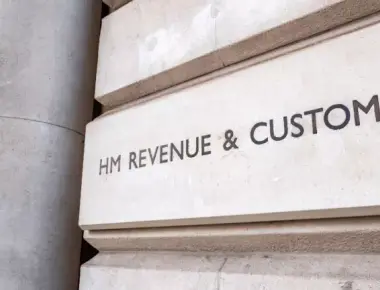![HMRC Letters and the State Pension Tax Confusion [What You Need to Know]](/static/5065f0d79fe1a053c2c9d68d0f796469/19188/image.png)
![HM Revenue & Customs (HMRC) [Complete 2025 Guide to UK Taxes, Benefits, and Refunds]](/static/1a2a16902107024713b0adc50ad58b87/28ffb/im.jpg)
HM Revenue & Customs (HMRC) [Complete 2025 Guide to UK Taxes, Benefits, and Refunds]
1. Introduction to HMRC
HM Revenue & Customs (HMRC) is the UK government department responsible for collecting taxes, paying certain benefits, and ensuring that public money is used effectively. It plays a vital role in funding the services that keep the UK running — from healthcare and education to roads and pensions.
Founded in 2005 after the merger of the Inland Revenue and HM Customs and Excise, HMRC’s mission is to collect the money that pays for public services and help families and individuals with targeted financial support.
Every year, HMRC handles billions of transactions through its digital systems — everything from Self Assessment tax returns and PAYE tax codes to National Insurance contributions and Child Benefit payments.
2. What HMRC Does
HMRC is responsible for:
- Collecting taxes — including Income Tax, Corporation Tax, Capital Gains Tax, and VAT.
- Administering benefits such as Child Benefit, Tax Credits, and Marriage Allowance.
- Handling customs and import duties for goods entering the UK.
- Enforcing tax compliance and investigating tax evasion or fraud.
In 2024–25, HMRC is expected to collect more than £900 billion in taxes, according to UK government budget forecasts.
3. HMRC Online Services and Accounts
Almost all HMRC services are now digital. To manage your taxes, you’ll need an HMRC online account via the Government Gateway.
How to Set Up an HMRC Account
- Go to www.gov.uk/log-in-register-hmrc-online-services.
- Click “Sign in” or “Register.”
- Create a Government Gateway ID using your email address and password.
- Verify your identity using a UK passport, payslip, or P60.
- Once verified, you can access all HMRC services under one account.
Popular Online Services
- Personal Tax Account — view and update your tax records.
- Self Assessment — submit your annual tax return.
- PAYE — for employees and employers.
- VAT & Corporation Tax — for business owners.
- Child Benefit — manage or claim online.
💡 Tip: Download the HMRC App (available on iOS and Android) to check your tax code, income, and National Insurance contributions instantly.
4. Understanding UK Taxes Managed by HMRC
HMRC oversees several types of taxes that affect individuals and businesses.
Income Tax
Most UK residents pay Income Tax on their earnings from work, pensions, or investments.
- Personal Allowance (2025/26): £12,570 (income below this is tax-free)
- Basic Rate: 20% on income between £12,571 and £50,270
- Higher Rate: 40% on income between £50,271 and £125,140
- Additional Rate: 45% on income above £125,140
National Insurance (NI)
National Insurance contributions fund benefits such as the State Pension.
- Class 1: Paid by employees via PAYE.
- Class 2 and 4: Paid by self-employed individuals.
Value Added Tax (VAT)
Charged on most goods and services.
- Standard rate: 20%
- Reduced rate: 5%
- Zero-rated goods: food, books, and children’s clothing.
Corporation Tax
Paid by limited companies on their profits.
- Standard rate (2025): 25% for companies with profits above £250,000.
Capital Gains Tax
Applies when selling assets like property or shares at a profit.
5. Self Assessment Tax Return
If you’re self-employed or have untaxed income, you must file a Self Assessment tax return each year.
Key Deadlines
- Register: by 5 October 2025
- Online Submission: by 31 January 2026
- Payment: by 31 January 2026 (and possibly 31 July for payments on account)
Filing Steps
- Register for Self Assessment.
- Gather income and expense records.
- Log in to your HMRC online account.
- Complete and submit your return.
- Pay your tax bill or claim a refund.
Penalties apply for late filing — £100 immediately after the deadline, with additional daily fines after three months.
6. HMRC Tax Refunds and Reclaims
If you’ve paid too much tax, you can claim a refund through HMRC.
Common Reasons for Overpayment
- Wrong tax code.
- Change of job or multiple jobs.
- Stopped working partway through the year.
- Expenses or uniform costs not claimed.
How to Claim a Refund
- Log in to your Personal Tax Account.
- Go to “Claim a Tax Refund.”
- Follow the on-screen instructions.
- HMRC usually processes refunds within 2–8 weeks.
⚠️ Beware of HMRC refund scams:
HMRC never contacts you by email, WhatsApp, or text asking for bank details. Report suspicious messages to phishing@hmrc.gov.uk.
7. PAYE and Employment Taxes
The Pay As You Earn (PAYE) system automatically deducts tax and National Insurance from employee wages.
Understanding Your Payslip
- Gross Pay: total earnings before deductions.
- Tax Code: determines how much tax you pay.
- NI Deductions: your National Insurance contribution.
Common PAYE Forms
- P45: issued when leaving a job.
- P60: summary of your annual pay and tax.
- P11D: shows benefits and expenses.
If your tax code seems wrong, you can update it in your HMRC Personal Tax Account.
8. HMRC and Benefits
HMRC manages several family and individual benefits.
Child Benefit
Available to anyone responsible for a child under 16 (or 20 if in education).
- £25.60 per week for the first child.
- £16.95 per week for additional children.
Marriage Allowance
Allows one spouse to transfer £1,260 of their tax-free allowance to their partner.
Tax Credits
HMRC still manages legacy Working Tax Credit and Child Tax Credit (being replaced by Universal Credit).
9. HMRC and Pensions
Tax on Pension Income
Your pension is usually taxed just like a salary.
- 25% of most private pensions can be taken tax-free.
- The rest is taxed at your normal rate.
State Pension
HMRC uses your National Insurance record to determine eligibility. You’ll pay tax if your total income exceeds your Personal Allowance.
Overpaid Pension Tax
If HMRC deducts too much, claim a refund using form P55 or P53Z online.
10. Common HMRC Problems and Solutions
| Problem | Likely Cause | Quick Fix |
|---|---|---|
| Wrong tax code | Job change or benefit adjustment | Update via Personal Tax Account |
| Missing refund | Bank details error | Contact HMRC helpline |
| Login issue | Wrong Government Gateway password | Reset credentials |
| HMRC letter confusion | System-generated notice | Verify via HMRC website |
11. HMRC Scams and Cybersecurity
Cybercriminals often impersonate HMRC.
Common Scams
- Fake refund emails or texts.
- Threatening phone calls demanding payment.
- Social media messages asking for personal data.
How to Report:
Forward suspicious emails to phishing@hmrc.gov.uk or texts to 60599.
12. Contacting HMRC (Updated 2025)
| Department | Contact Number | Hours |
|---|---|---|
| Income Tax | 0300 200 3300 | Mon–Fri, 8am–8pm |
| Self Assessment | 0300 200 3310 | Mon–Fri, 8am–8pm |
| National Insurance | 0300 200 3500 | Mon–Fri, 8am–6pm |
| Child Benefit | 0300 200 3100 | Mon–Fri, 8am–6pm |
| HMRC Webchat | Available via GOV.UK | 24/7 for some services |
13. Frequently Asked Questions (FAQs)
Q: How long does an HMRC refund take?
A: Most refunds are processed within 2–8 weeks after submission.
Q: How do I check my tax code?
A: Log in to your HMRC Personal Tax Account or check your payslip.
Q: Can I call HMRC on weekends?
A: Generally no; HMRC helplines close on weekends except for digital chat support.
Q: What if I miss the Self Assessment deadline?
A: You’ll pay an automatic £100 fine, increasing over time.
Q: How can I verify a letter from HMRC is real?
A: Contact HMRC directly using the official numbers on GOV.UK.
14. Staying Updated with HMRC
Tax rules change every financial year. Subscribe to HMRC updates via:
- www.gov.uk/hmrc
- HMRC Twitter/X: @HMRCgovuk
- OneShekel.com’s tax insights
15. Final Thoughts
HM Revenue & Customs is at the heart of the UK’s financial system — managing taxes, benefits, and compliance for millions. Understanding how HMRC works can help you save money, avoid fines, and stay compliant with UK tax law.
Whether you’re claiming a refund, checking your PAYE code, or filing a Self Assessment return, using HMRC’s digital tools makes the process easier than ever.
For practical, updated insights, always cross-check with official HMRC pages — and keep following OneShekel.com for simplified tax guides and financial updates tailored for UK readers.
© 2025 OneShekel.com — Simplifying Taxes, Empowering Readers
Tags
Share
Related Posts
Quick Links



![HMRC and the UK State Pension Tax [Everything You Need to Know]](/static/2da552f3d27fbf43d2175b17c15d239d/144fe/hmrc.jpg)
![Nationwide Building Society [Regulatory Framework, Capital Instruments, and Balance Sheet Resilience Explained]](/static/04737821097ecacfe5d915f913a236b6/144fe/im.jpg)

![HMRC Child Benefit [Guide for UK Parents]](/static/63047850f54864aecc585f638235385d/144fe/im.jpg)